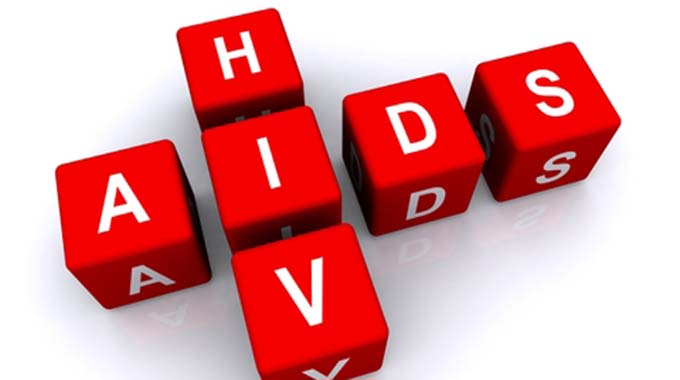Can Zim end Aids by 2030?

Mirirai Nsingo
Mary is a first-year tertiary student at one of the country’s state universities.
Her parents are yet to pay all her fees for the previous semester and she is struggling to pay rentals let alone buy food given the price hikes that the country has been witnessing.
She spent the last month of the previous semester living with a friend who was also sharing the room with four other students.
The room is in one of the townships near their university and the township is overpopulated by students most of whom live in squalid conditions.
Her single mother is employed as teacher and is struggling to pay her tertiary fees and can hardly afford to support her.
“My mother is doing all that she can but she is struggling. I have no money for rentals and so my friend offered to stay with me for the last month of the semester as I also had no food.
“She shares the room with four other girls so she explained to them my situation and they agreed to accommodate me,” said Mary.
“Sometimes if I have a stable boyfriend, he is the one who buys me food and helps with rent. To be honest my man friends are the ones who have been supporting my upkeep and I give them sexual favours in exchange for the financial support.”
“My mother cannot afford to pay for my rent and buy food and she even struggles to pay for tuition so I just have to find ways to survive and finish school,” Mary explains.
Her life mirrors that of several other girls in tertiary institutions who have become increasingly vulnerable in the wake of economic challenges the country is currently facing.
With such problems like Mary’s, National AIDS Council’s monitoring and evaluation director Amon Mpofu believes Zimbabwe and Southern Africa can never end AIDS by 2030 unless the region comes up with tailor-made policies to address problems like those of Mary.
Mpofu says living standards for tertiary students are appalling, imploring policy makers to act on this situation that he says has potential to reverse all the gains Zimbabwe has made towards the HIV response.
The epidemic’s victims in sub-Saharan Africa are increasingly young people with girls being more susceptible due to various biological, social and economic factors among others.
Three in four new HIV infections among 15-24-year-olds are among girls in sub-Saharan Africa according to the United Nations AIDS Programme (UNAIDS).
“I have been around the country’s tertiary institutions and the situation is deplorable. All those townships around those tertiary institutions have become dormitories for the students and the way they are crowded and the conditions are a haven for new HIV infections.
“Girls are much more vulnerable and given the economic hardships, tertiary students have become increasingly at risk of new infections.
“Policy makers need to look into the issue of accommodation and vulnerability in tertiary institutions. We have an issue to protect our kids in tertiary institutions otherwise they will bring (back home) a degree and HIV,” says Mpofu.
Mpofu argues that sub-Saharan Africa is not likely to end Aids by 2030 as she has a bigger problem than the rest of the world.
“Yes we have targets that have been set for us globally but the region has a bigger problem hence cannot have targets detected by those with lesser problems.”
“Sub-Saharan Africa should not relax and I don’t think we are going to end Aids in 2030.
“The epidemic remains severe in the region and it is time the Southern African Development Community stand up and set policies that are tailor-made to address challenges in the region,” adds Mpofu.
Director for the AIDS and TB unit in the Ministry of Health and Child Care, Dr Owen Mugurungi concurs that there is need to come up with policies that reduces vulnerabilities especially in girls.
“Most of these vulnerabilities especially among young people are fuelled by inequalities within our economic, political and social structures and there is need to come up with policies that addresses such issues.
“The response requires a multi-sectorial approach and it is within the policy maker’s powers to deal with all the issues that increase vulnerability especially among the vulnerable groups.
“We need policies that address all those impediments.
“The laws should be made in such a manner that there is better access to health services for our vulnerable groups.
“For a very long time, Zimbabwe’s response has been a biomedical one but this response cannot work alone given all these challenges the country is facing.”
While Zimbabwe has been shining across the world in terms of managing the HIV response, Mpofu says the current economic challenges had also affected Aids levy and will soon pose problems if they continue failing to access foreign currency.
“We have $25 million that is in the bank in the form of RTGs and we cannot access it while we are in debt of US $6 million following a delivery of ART that was made in 2017 that we are yet to pay our supplier due to foreign currency challenges.
“We got funding from Global Fund on the basis that National AIDS Trust Fund will contribute 20 percent towards its own medication and now we are failing to meet this obligation due to the foreign currency challenges. Global Fund has already threatened to reduce funding if we continue to fail to meet our obligation.
“It is our prayer that Reserve Bank will treat this as a matter of urgency and allocate foreign currency to avert possible challenges.”
Global Fund is the major funder of the ART programme in Zimbabwe contributing more than 70 percent while other partners contribute 10 percent and the other 20 percent comes from the Government through AIDS levy.
Zimbabwe has an estimated 1, 2 million on anti-retroviral treatment and 700 000 of those people on ART’s medication comes from Global Fund.
In the face of such challenges, Mpofu believes the solution for Zimbabwe and sub-Sahara lies in coming up with tailor made policies to address their problems rather than to have their pace detected by those with a lesser problem.










Comments